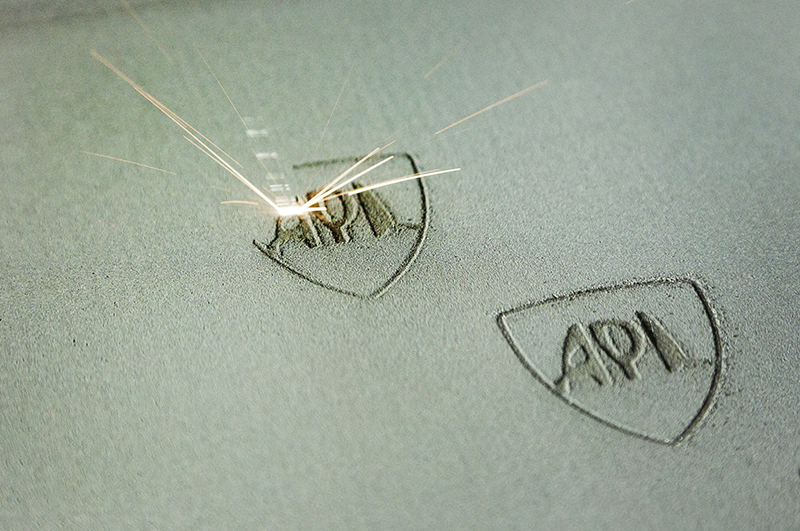Press Release
Johns Hopkins APL Earns Additive Manufacturing Benchmark Challenge Honors

Credit: Johns Hopkins APL
Researchers from the Johns Hopkins Applied Physics Laboratory (APL) in Laurel, Maryland, earned three modeling challenge awards from the Additive Manufacturing Benchmark 2022 Test Series, known as AM-Bench.
Led by the National Institute of Standards and Technology (NIST), AM-Bench is the world’s primary provider of rigorous benchmark measurement data for guiding and validating additive manufacturing simulations. Its measurements, challenge problems and conference draw expertise from 10 NIST divisions and 20 external organizations.
APL’s submissions earned two first-place awards — in the modeling prediction of the Track Liquid Cooling Rate and Track Time Above Melt challenges — and one second-place award in the modeling prediction of the Track Solid Cooling Rate challenge. All three modeling results were within the Single Tracks and Arrays of Tracks modeling challenge, which explored a range of individual and overlapping melt pool behaviors using individual laser tracks and 2D arrays of laser tracks on solid metal plates of IN718 with different laser power, speed and laser diameter settings.
“Additive manufacturing is revolutionizing the way we design and fabricate systems critical to our nation, and APL is at the forefront of research to develop and deliver world-class contributions to our sponsors and partners,” said John Bigelow, managing executive of APL’s Research and Exploratory Development Department (REDD). “We’re honored to accept these awards and share our expertise to further advance industry standards.”
The expansion of additive manufacturing research and capabilities in recent years revealed the need for high-fidelity, physics-based simulations validated by rigorous measurement data. To address the measurement validation problem, NIST initiated AM-Bench in 2018 so additive manufacturing modelers and metrologists could compare computational predictions to an array of measurements designed and dedicated to advancing additive manufacturing modeling. The challenge series aims to generate measurement data and discourse within the additive manufacturing industry. In 2022, the AM-Bench Organizing Committee received 138 submissions from groups around the world.
“From laser absorption to computational fluid dynamics modeling, these submissions had a variety of components we needed to complete, and they were done successfully with support from my team members in the Multifunctional Materials and Nanostructures Group and the Advanced Mechanical Fabrication Group,” said Li Ma, a senior researcher in REDD and additive manufacturing AM-Bench lead. “This is just one way we’ve demonstrated APL’s computational modeling capabilities and expertise.”
Ma accepted the awards on behalf of the APL team at the AM-Bench 2022 conference on Aug. 17, in Bethesda, Maryland.
In 2016, APL initiated a strategic effort in additive manufacturing, expanding its expertise and capabilities in metal and polymer additive manufacturing, mechanical design, materials science, physics and intelligent systems. The team established a vision to “invent the future” of additive manufacturing, spanning cutting-edge research to implementation. Since then, APL researchers have created the first additively manufactured metal part for a space mission, used metal additive manufacturing to design novel shape memory alloy actuators and tailor their transformation temperature, and worked with the Department of Defense to understand the effects of defects in additive manufacturing, among many other additive manufacturing innovations.
